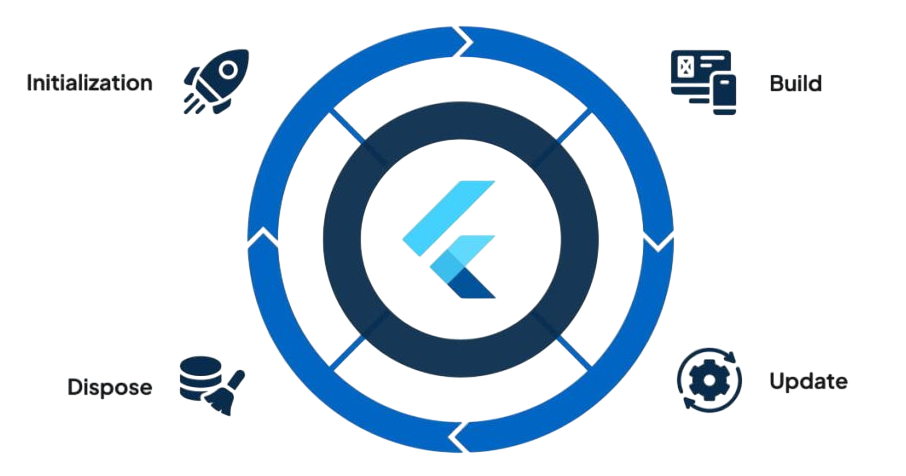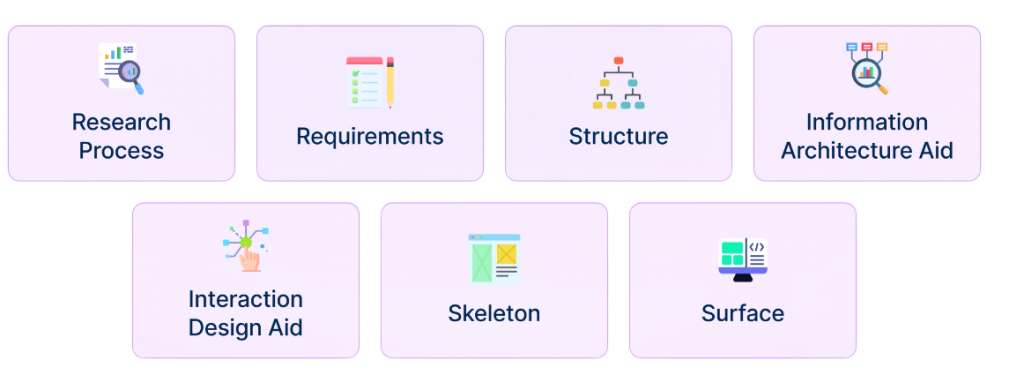
- Cross-Platform Development
- Overview of Flutter & React Native
- Programming Language Comparison (Dart vs JS)
- Performance Comparison
- UI Components and Development Ease
- Community and Ecosystem
- Platform Support and Native Features
- Learning Curve
- Conclusion
Cross-Platform Development
In the rapidly evolving world of mobile and web applications, businesses and developers are constantly seeking efficient ways to create applications that run seamlessly on multiple platforms. Cross-platform development has emerged as a viable solution, allowing developers to write a single codebase that can be deployed across various platforms such as iOS, Android, web, and desktop an approach explored in Web Designing Training, where Angular CLI and NativeScript Schematics enable shared logic across mobile and web apps. By separating platform-specific views while maintaining unified services and components, developers can achieve up to 70% code reuse and streamline deployment across devices. This approach not only saves time and resources but also ensures consistency in user experience. Cross-platform frameworks aim to bridge the gap between native performance and development efficiency. Among the various frameworks available today, Flutter vs React Native is often the central debate, as both stand out as two of the most popular choices. Each brings unique advantages and challenges, making it essential to explore Flutter vs React Native carefully to understand their core concepts, strengths, and limitations before selecting the right tool for a project.
To Earn Your Web Developer Certification, Gain Insights From Leading Data Science Experts And Advance Your Career With ACTE’s Web Developer Courses Today!
Overview of Flutter & React Native
Flutter
Flutter is an open-source UI software development kit (SDK) created by Google. Released in 2017, Flutter enables developers to build natively compiled applications for mobile, web, and desktop from a single codebase. Flutter uses the Dart programming language and comes with its own set of rich, customizable widgets that mimic the native components of each platform an architectural contrast to AngularJS CDN Integration, where developers leverage lightweight CDN links to rapidly deploy AngularJS applications without local setup. While Flutter emphasizes native-like UI through reusable widgets, AngularJS focuses on dynamic web rendering via declarative templates and two-way data binding, making each ideal for different layers of the development stack. Flutter’s architecture is designed to deliver high performance. It includes a rendering engine called Skia, which allows Flutter to draw UI components directly to the screen, bypassing native UI elements. This results in a high degree of control over the UI and smooth animations.

React Native
React Native, developed by Facebook and released in 2015, is another popular framework for cross-platform mobile development. It allows developers to use JavaScript and React to build mobile applications that render using native components. React Native bridges the gap between web and mobile development by allowing code reuse and offering access to native APIs. Unlike Flutter, which uses its own widgets, React Native relies on the platform’s native UI components, offering a more authentic native look and feel. It employs a JavaScript bridge to communicate between the native layer and the app logic, which can sometimes affect performance but offers flexibility and ease of integration with existing native code.
Programming Language Comparison (Dart vs JavaScript)
One of the fundamental differences between Flutter and React Native is the programming language. Flutter uses Dart, a language developed by Google, while React Native uses JavaScript, the most widely used language for web development an essential comparison explored in Web Development Languages To Learn, where developers evaluate syntax familiarity, ecosystem maturity, and cross-platform capabilities. Understanding these distinctions helps teams choose the right stack based on performance needs, developer experience, and long-term scalability.
- Dart: Dart is an object-oriented, class-based language with a C-style syntax. It offers features like async-await, strong typing, and null safety. Although not as widely adopted as JavaScript, Dart is easy to learn for developers familiar with Java or C#.
- JavaScript: JavaScript is a dynamically typed, interpreted language known for its ubiquity on the web. It has a massive ecosystem, extensive libraries, and frameworks, making it easier to find resources and community support.
While JavaScript’s widespread usage gives React Native an advantage in terms of onboarding developers, Dart’s structured nature and seamless integration with Flutter make it a robust choice for building complex applications.
Would You Like to Know More About Web Developer? Sign Up For Our Web Developer Courses Now!
Performance Comparison
Performance is a critical factor in mobile development, especially for applications that require smooth animations, complex computations, or real-time updates an emphasis found in Web Designing Training, where learners explore optimization techniques for responsive design, multimedia rendering, and asynchronous data handling. By mastering tools like CSS animations, JavaScript event loops, and API-driven workflows, developers can build fast, fluid experiences across mobile and web platforms.
- Flutter Performance: Flutter compiles to native ARM code using the Dart language and includes its own rendering engine. This enables high-performance applications with consistent 60fps (or even 120fps on capable hardware). Since it doesn’t rely on a bridge to communicate with native components, latency is reduced, and performance is generally better for graphic-intensive apps.
- React Native Performance: React Native uses a bridge to communicate between JavaScript and native components, which can introduce performance bottlenecks, especially in complex applications. However, performance can be improved using techniques such as native modules, JSI (JavaScript Interface), and third-party libraries like Reanimated 2.
In summary, Flutter typically offers better performance out of the box, especially for applications with custom UI and animations, while React Native requires optimization to match Flutter’s performance.
UI Components and Development Ease
- Flutter: Flutter provides a rich set of pre-designed widgets that are highly customizable. These widgets are drawn directly on the canvas using the Skia engine, allowing developers full control over every pixel on the screen an advanced rendering capability explored in Practical Applications of Python, where bindings like skia-python enable developers to manipulate graphics at the pixel level.
- From custom UI components to real-time visualizations, Python’s integration with Skia empowers precision drawing, hardware acceleration, and cross-platform deployment for high-performance applications. This makes it easy to create custom designs that are consistent across platforms.
- React Native: React Native leverages native components, which helps provide a platform-specific look and feel. While it comes with a basic set of components, developers often rely on third-party libraries for additional UI elements and design consistency.

Flutter’s comprehensive widget library can speed up development for UI-heavy applications, while React Native offers flexibility by allowing native code integration and use of platform-specific UI an architectural contrast explored in Software Developer vs Software Engineer, where the distinction between practical coding and system-level engineering is unpacked. Developers focus on building user-facing features, while engineers architect scalable systems, making framework choice a reflection of project scope and team expertise.
Are You Interested in Learning More About Web Developer? Sign Up For Our Web Developer Courses Today!
Community and Ecosystem
- Flutter Community: Flutter has a growing community with strong support from Google. It offers extensive documentation, active forums, and a rich ecosystem of plugins and packages available through pub.dev. Although younger than React Native, Flutter’s community is rapidly expanding.
- React Native Community: React Native has a mature and well-established community, given its earlier release and JavaScript foundation. It benefits from a vast number of open-source libraries, tutorials, and tools that enhance development efficiency.
In terms of ecosystem maturity, React Native currently has the edge, but Flutter is catching up quickly, especially with Google’s backing and frequent updates.
Platform Support and Native Features
- Flutter: Flutter supports mobile (iOS and Android), web, and desktop (Windows, macOS, Linux). It offers good integration with platform-specific APIs through platform channels, though native functionality may require writing some platform-specific code.
- React Native: React Native primarily supports iOS and Android but has community-driven support for web and desktop. It offers better integration with native code and third-party plugins, which is advantageous for applications requiring extensive native functionality.
Flutter’s official multi-platform support makes it a strong candidate for building apps targeting multiple environments, whereas React Native is more established for mobile-first development with native code flexibility an architectural contrast to Exploring the Various Decorators in Angular, where developers learn how decorators like Component, Injectable, and Directive define metadata and behavior across Angular applications. While Flutter and React Native focus on UI rendering across platforms, Angular decorators enable modular configuration, dependency injection, and declarative logic within web ecosystems.
Learning Curve
- Flutter: Learning Flutter involves understanding Dart, widget-based architecture, and the Flutter-specific development paradigms. For new developers, the comprehensive documentation and tutorials ease the learning process, but Dart’s relative obscurity can be a barrier.
- React Native: React Native has a lower learning curve for web developers familiar with JavaScript and React. The ability to reuse existing web development skills makes it an attractive choice for teams transitioning to mobile development.
For teams already proficient in JavaScript, React Native offers a smoother transition, while Flutter may require more initial investment but pays off with performance and UI consistency.
Version Control (Git, GitHub)
Version control is a vital part of modern software development. Git has become the standard system that helps developers track, manage, and collaborate on code. Using platforms like GitHub, teams can host repositories, perform code reviews, and improve project workflows with features like pull requests and issue tracking. Following best practices such as writing clear commit messages, using consistent branching strategies like Git Flow, and holding regular code reviews helps development teams keep their processes high-quality, clear, and efficient core habits emphasized in Become a Front End Developer, where mastering Git workflows is essential for collaboration and maintainability. By using imperative commit messages, structured pull requests, and frequent code reviews, developers ensure their projects remain scalable, readable, and team-friendly. This method boosts collaboration and creates a strong system for tracking changes, managing releases, and preserving the integrity of complex software projects.
Conclusion
Flutter and React Native are both powerful tools for cross-platform development, each excelling in different areas. Comparing Flutter vs React Native helps developers understand that Flutter shines in performance, custom UI, and full platform support, making it suitable for projects prioritizing a seamless, high-performance user experience, while React Native offers a familiar development environment for web developers, a robust ecosystem, and greater flexibility with native code an essential distinction explored in Web Designing Training, where learners evaluate rendering engines, state management patterns, and platform integration strategies. By mastering both frameworks, developers can choose the right tool based on project goals, team expertise, and scalability needs. The choice between Flutter vs React Native depends on the specific needs of the project, the team’s expertise, and the desired user experience. Understanding the strengths and limitations of each framework is key to making an informed decision that aligns with the goals of the application.



